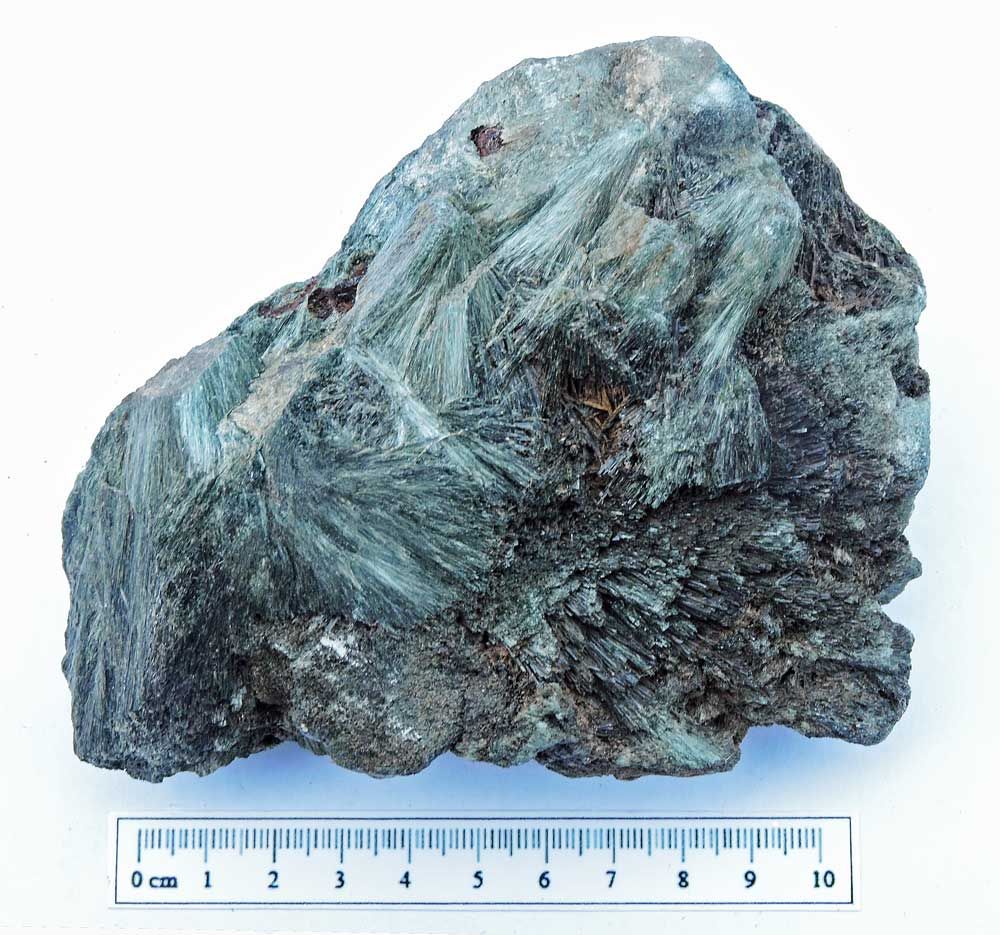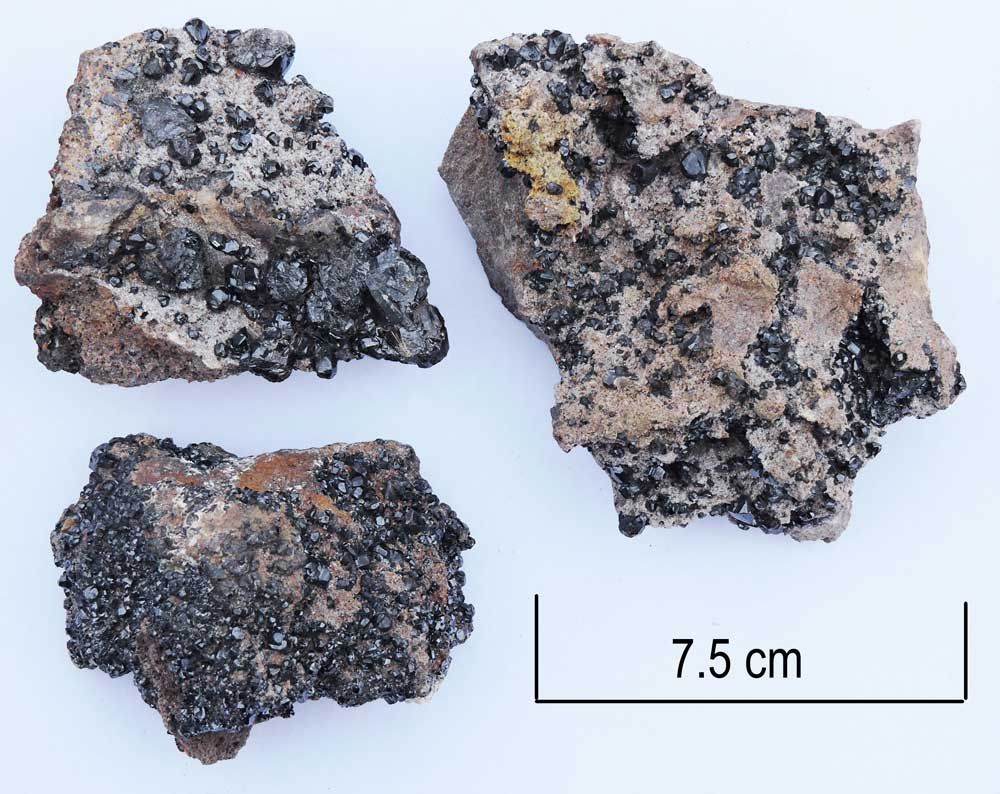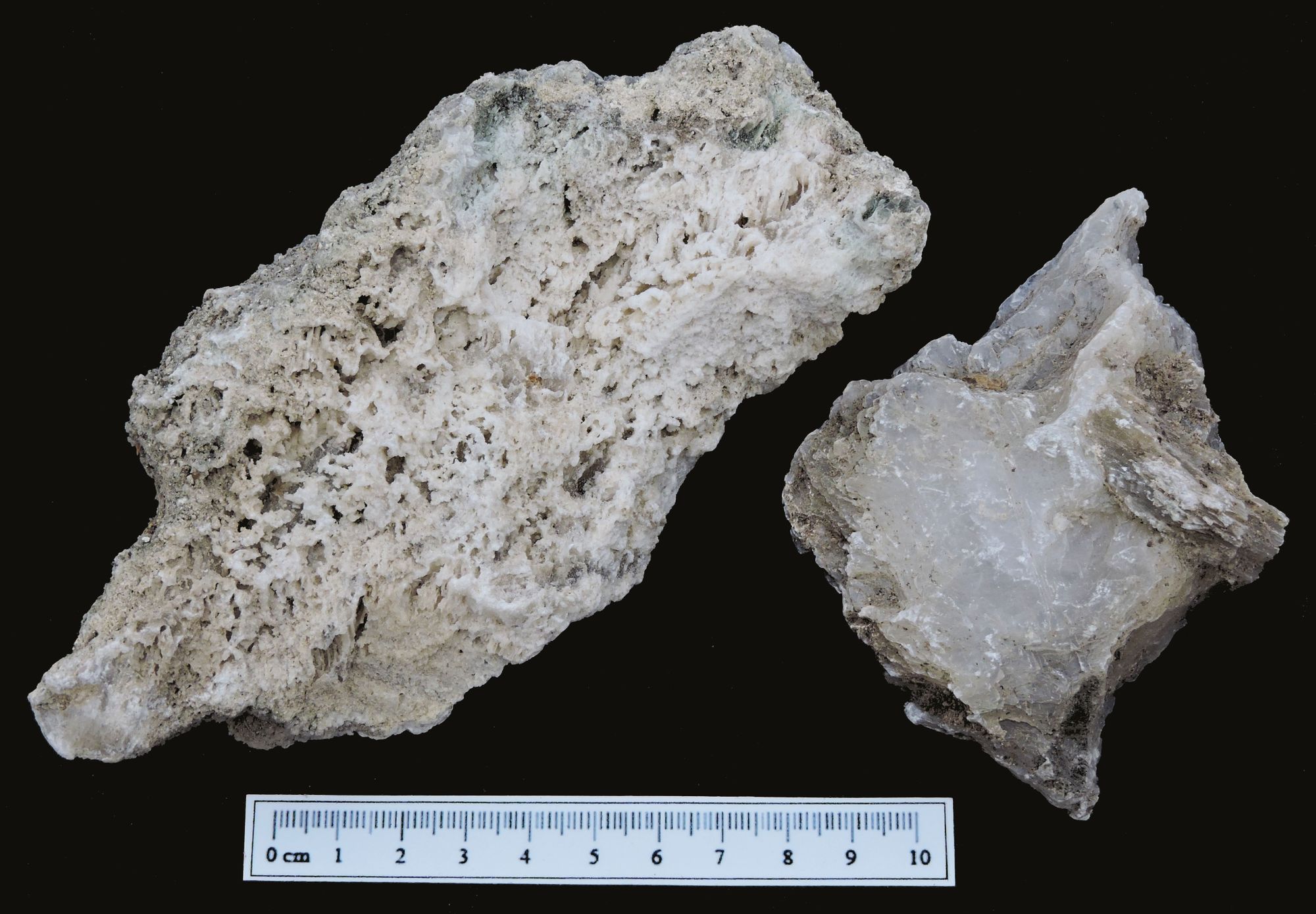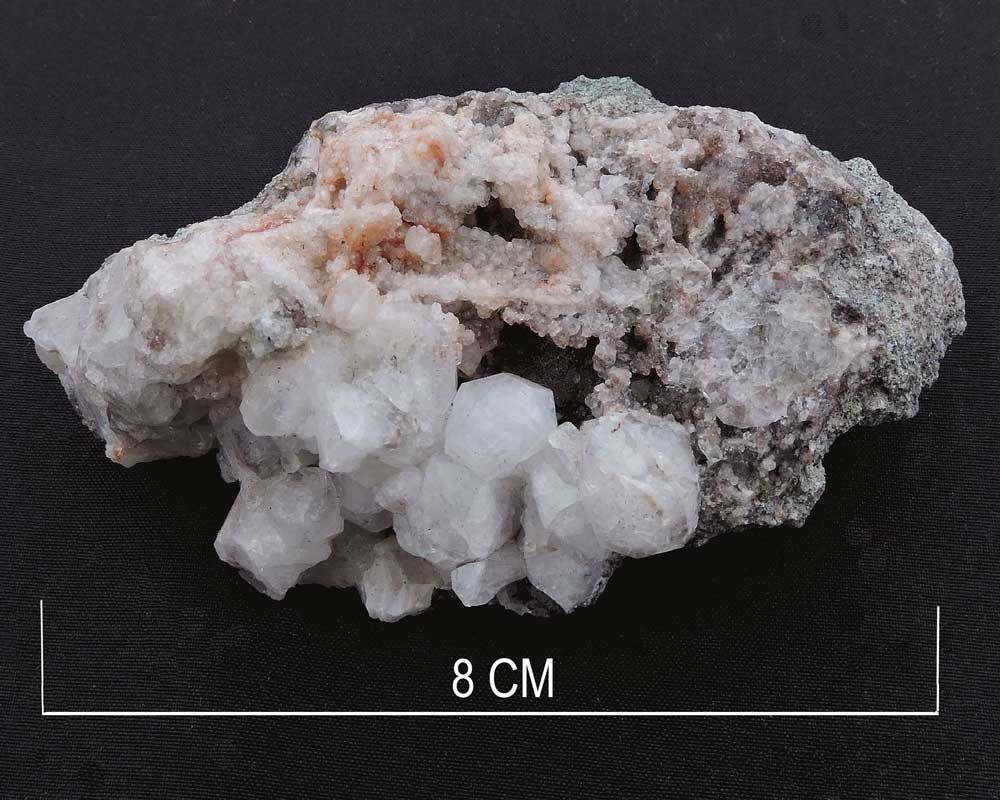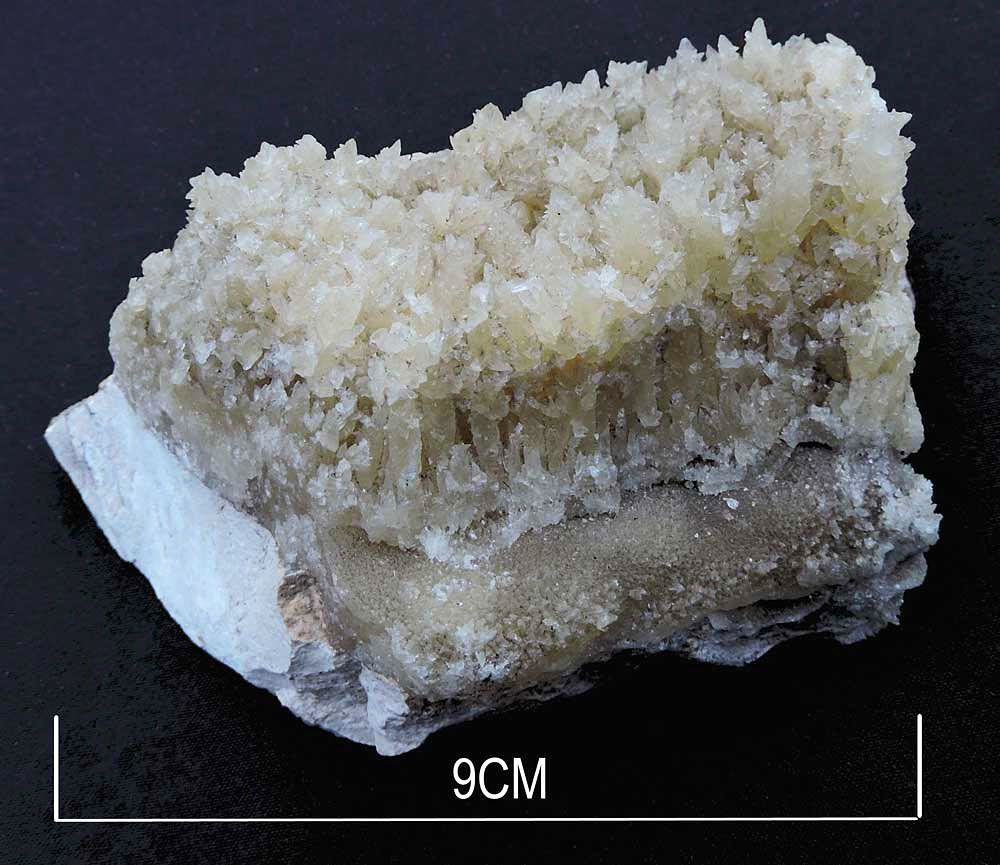
Aragonite, Speeton
Aragonite, CaCO3 is a high pressure polymorph of Calcium carbonate. It is metastable near the earths surface, and will eventually decompose to the form of calcite. The specimen which is from the boulder clay at Speeton in Yorkshire has three distinct components, first a limestone base, then a deposit of very fine aragonite crystals, and finally a second generation deposit of closely packed dog tooth aragonite crystals.
